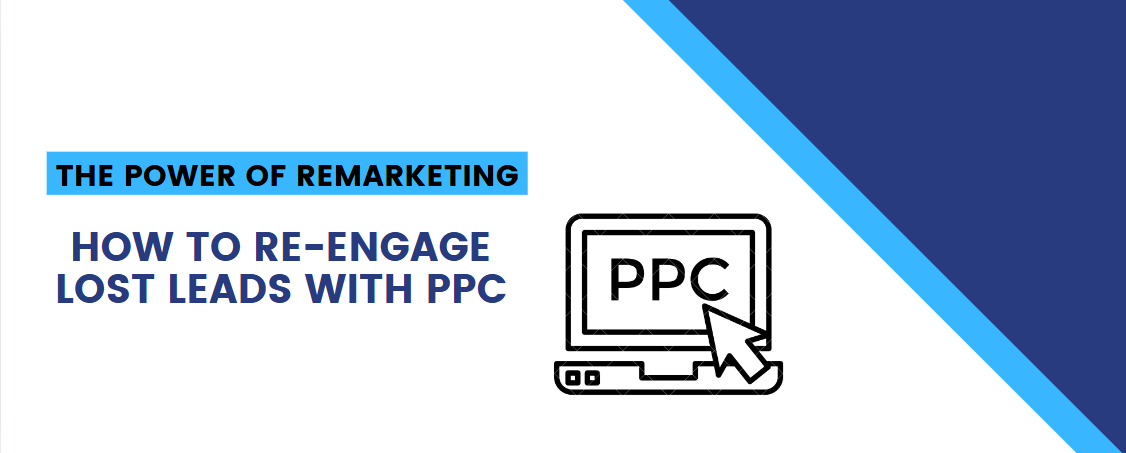In the world of online marketing, it’s easy to get discouraged when potential customers visit your site, browse your products or services, and then leave without making a purchase. It feels like you’ve lost a lead forever, right? But what if I told you there’s a way to bring those visitors back and turn them into customers? That’s where remarketing comes in.
Remarketing (also known as retargeting) is a powerful strategy in digital marketing that focuses on re-engaging people who have already interacted with your business but didn’t take the final step, whether it’s signing up for a newsletter, downloading a guide, or making a purchase. One of the most effective ways to use remarketing is through Pay-Per-Click (PPC) advertising, which allows you to target these “lost" leads with personalized ads as they browse other websites, check their social media, or search online.
In this blog post, we’ll dive deep into the power of remarketing, how it works, and why it’s so effective for bringing back those potential customers who have slipped through the cracks.
Why Remarketing Is So Important
Before we get into the specifics of how to use remarketing through PPC, let’s look at why it’s so important in the first place.

Did you know that on average, 98% of visitors who come to your website won’t make a purchase on their first visit? That’s right—only 2% of web traffic converts into sales or leads the first time around. This means that the vast majority of your visitors are likely to leave without completing their intended action.
However, remarketing can help you capture a significant portion of those lost leads. According to Google, remarketing can increase ad response rates by 400%. That’s a huge jump in effectiveness compared to traditional advertising methods. Additionally, 47% of online buyers are more likely to click on a remarketing ad because it’s personalized to their previous interactions with your brand.
With numbers like these, it’s clear that remarketing is not just an option—it’s a strategy that can dramatically boost your conversion rates.
How Remarketing Works
Remarketing through PPC works by tracking users who have previously visited your website, interacted with your brand, or engaged with your content, and then showing them targeted ads as they browse other sites or social media platforms. The process relies on a small piece of code called a cookie, which tracks the behavior of visitors across the internet.
Here’s a simplified version of how remarketing through PPC happens:
- Visitor Interaction: A potential customer visits your website, maybe views some products, reads a blog post, or adds an item to their cart but doesn’t complete the checkout process.
- Tracking: A tracking code (often provided by Google Ads, Facebook, or other PPC platforms) places a cookie on the user’s browser, recording that they’ve visited your site and interacted with specific content.
- Ad Creation: You create targeted ads based on the user’s previous interactions. For example, if someone looked at a specific pair of shoes but didn’t buy them, you might show them an ad featuring the same shoes with a limited-time discount.
- Ad Display: The user leaves your site and continues to browse other websites or social media platforms. As they go about their day, your remarketing ads start showing up on the pages they visit. This keeps your brand top of mind.
- Conversion: The user finally clicks on your remarketing ad, returns to your site, and completes their purchase or desired action.
Remarketing is effective because it targets people who have already shown interest in your brand. You’re not starting from scratch with someone who has no idea who you are. Instead, you’re nurturing leads who are already familiar with your offerings, making it easier to guide them through the decision-making process.
Why PPC Remarketing Works So Well
Now that we understand how remarketing works, let’s dive into why PPC is such a great way to run your remarketing campaigns.

- High Intent: Remarketing focuses on people who have already interacted with your website or brand. This means they have higher intent to convert, and PPC allows you to serve them personalized ads that speak directly to their previous actions. For example, if someone abandoned their shopping cart, you can show them an ad with a special discount or reminder.
- Cost-Effective: Unlike traditional advertising where you pay for impressions regardless of whether or not someone clicks on your ad, with PPC, you only pay when someone clicks on your ad. This means you’re paying for actual engagement with your brand, not just eyeballs on your ad. Remarketing ads typically have a lower cost-per-click (CPC) compared to regular PPC ads because you’re targeting people who have already shown interest.
- Better Conversion Rates: Remarketing ads have proven to have much higher conversion rates than standard display ads. According to WordStream, remarketing ads typically have a conversion rate of 2-3 times higher than regular display ads. This means you’re getting more bang for your buck when you run remarketing campaigns.
- Increased Brand Recall: Even if a user doesn’t immediately click on your remarketing ad and convert, seeing your brand repeatedly can increase brand recall. This can lead to a future conversion when they’re ready to buy.
- Customizable and Targeted: One of the biggest advantages of PPC remarketing is that you can tailor your ads based on specific actions users took on your site. For instance, if someone visited your blog but didn’t sign up for your newsletter, you could target them with an ad offering a free downloadable eBook in exchange for their email address. By segmenting your audience and creating highly targeted campaigns, you increase the chances of re-engaging them.
Stats That Prove Remarketing Works
To truly appreciate the power of remarketing, it helps to look at some key statistics that highlight how effective it can be:
- 72% of online shoppers say they’re more likely to buy a product they see in a remarketing ad. (Source: WordStream)
- According to Google, display ads (such as remarketing ads) see a 70% increase in brand recall.
- Remarketing can increase conversion rates by up to 150%. (Source: Criteo)
- 53% of buyers say that seeing remarketing ads made them more likely to buy from a brand they hadn’t initially bought from. (Source: Google Ads)
- 75% of people who see remarketing ads will eventually return to the website and convert. (Source: AdRoll)
- Remarketing ads can reduce cart abandonment rates by up to 26%. (Source: SalesCycle)
Best Practices for PPC Remarketing Campaigns
To make sure your PPC remarketing campaigns are successful, here are some best practices to keep in mind:
- Segment Your Audience: Not all visitors are the same, so segment them based on their actions. Did they abandon their cart? Did they read a blog post? Did they just browse a product category? Tailor your ads to their behavior. This way, you can show them the most relevant ad based on their journey.
- Use Different Ad Formats: Diversify the type of ads you use. Static banners, video ads, carousel ads—all of these can be effective in grabbing attention. Testing different formats will help you figure out what resonates best with your audience.
- Set Frequency Caps: While it’s important to stay top-of-mind, you don’t want to annoy potential customers with too many ads. Set a frequency cap to limit the number of times a person sees your ads in a given time frame. This will prevent ad fatigue and help maintain a positive user experience.
- Use Dynamic Remarketing: Dynamic remarketing takes personalization to the next level by showing users ads featuring the exact products they viewed on your site. According to Google, dynamic remarketing ads can see 2x the conversion rate compared to regular display ads.
- Offer Incentives: If a customer left their cart behind or browsed without buying, a discount or special offer can be the nudge they need to come back and complete their purchase. Offering time-sensitive deals creates urgency.
- Monitor and Optimize: Keep an eye on how your campaigns are performing and make adjustments where necessary. A/B test your ads, tweak your targeting, and continually optimize for better performance.
Conclusion: Re-engage and Reap the Rewards
Remarketing is a powerful tool for re-engaging lost leads and converting them into loyal customers. By using PPC advertising to target people who have already interacted with your website, you’re focusing your efforts on the people who are most likely to convert—those who have already shown an interest in your products or services.
With impressive stats backing the effectiveness of remarketing, such as higher conversion rates, lower CPC, and better brand recall, it’s clear that this strategy can be a game-changer for any business. If you’re not already running remarketing campaigns, it’s time to start. By taking advantage of the power of remarketing, you can re-engage your lost leads, maximize your PPC efforts, and ultimately increase your sales and revenue.
So, don’t let those leads slip away. Bring them back with targeted, personalized remarketing ads, and watch your business grow!


